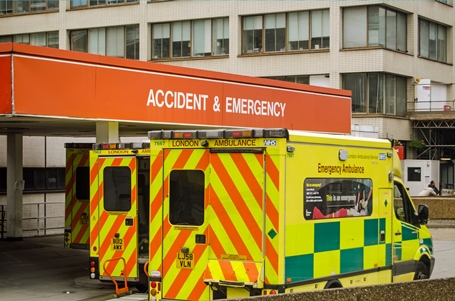Research shows ‘vital’ emergency service response continues alongside national drug overdose programme
Published: 7 November 2016
Researchers evaluating the impact of a national public health programme, aimed at reducing drug-related deaths, have found no clear association with a decrease in ambulance attendance to drug-related overdoses.
Researchers evaluating the impact of a national public health programme, aimed at reducing drug-related deaths, have found no clear association with a decrease in ambulance attendance to drug-related overdoses.

The study, carried out by researchers from the University of Glasgow, Glasgow Caledonian University, and the NHS in Scotland, and published today in Addiction, may help alleviate concerns that the programme would lead to fewer attendances by emergency medical services at opioid-related overdose incidents.
The Scottish Government established a national naloxone programme (NNP) in 2010 aimed at reducing drug-related deaths by distributing ‘take home’ naloxone kits – a medication used to reverse the effects of opioids such as heroin or methadone in an overdose situation. The NNP was highlighted by both the World Health Organization (WHO) and the European Monitoring Centre for Drugs and Drug Addiction (EMCDDA) as a model of ‘best practice’.
However, there were concerns that if peer administration of naloxone was perceived to have successfully resuscitated the overdose victim, fewer drug-related overdoses would be attended by the emergency medical services. Specialist medical intervention is vital in such situations because naloxone is short-acting and the patient may revert back into a state of overdose.
This study has found that the supply of these kits through the programme had no significant effect on ambulance attendance at overdose incidents in the four-year period after it was implemented.
Lead author, Andrew McAuley said: “For the first time internationally, this study has dispelled the myth that ambulance attendance at overdose events would fall when people who inject drugs are supplied with naloxone for peer administration.
“Further research is required to understand individual experience of take-home naloxone and the factors that influence decision-making when deciding whether to call an ambulance or not.”
Drug-related deaths, particularly among people who inject drugs (opioids), continues to be a key public health issue, with rates in Scotland increasing over time and higher than in any other UK region and amongst the highest in Europe.
Co-author Dr Jim Lewsey, Institute of Health & Wellbeing (IHW), University of Glasgow, said: “A key strength of our study is the use of nationally representative data and high quality scientific methods. We are confident in our conclusion that there is no evidence that NNP is associated with a difference in the rate of ambulance attendance at opioid overdoses.”
Co-author Dr Danny Mackay, also IHW, added “Crucially, our statistical models account for any seasonal effects and also for the underlying trend over time in overdose incidents in an area outside Scotland, namely London.”
Data was collected from the period April 2008 to March 2015, both before and after implementation of the NNP, using weekly callouts to opioid-related overdose incidents by the Scottish Ambulance Service and the number of take-home naloxone kits issued as part of the NNP.
The study, ‘Evaluating the impact of a national naloxone programme on ambulance attendance at overdose incidents: a controlled time series analysis’ is published in Addiction. The study was funded by NHS Health Scotland.
First published: 7 November 2016
<< 2016

